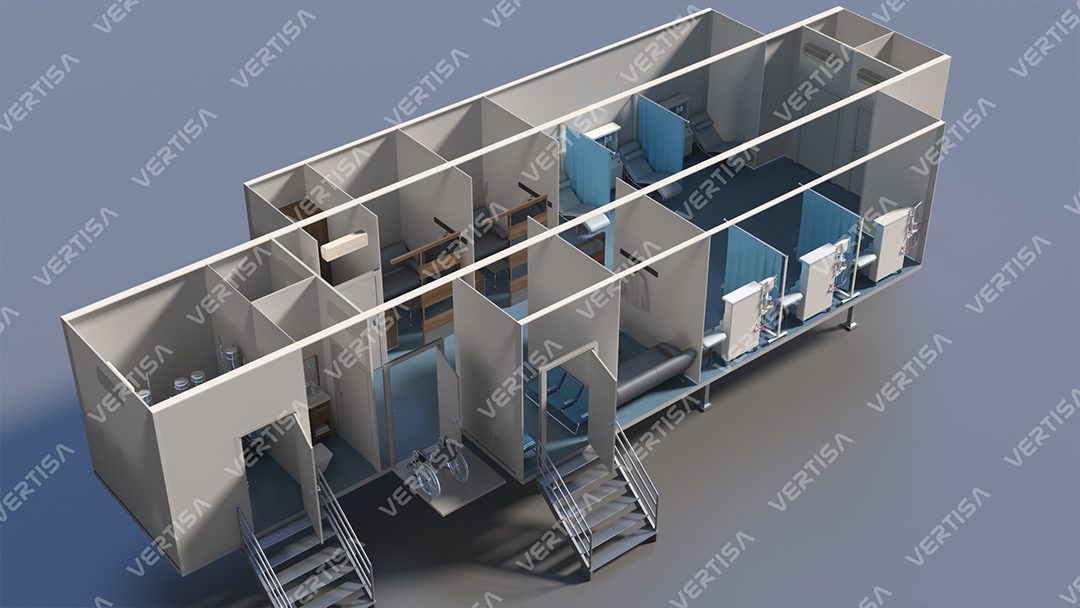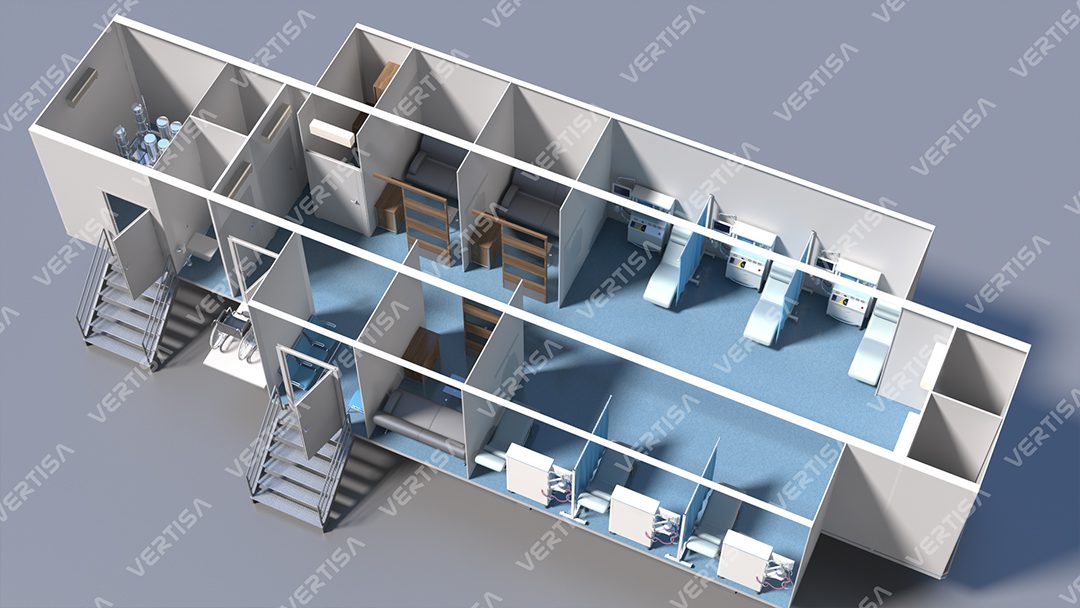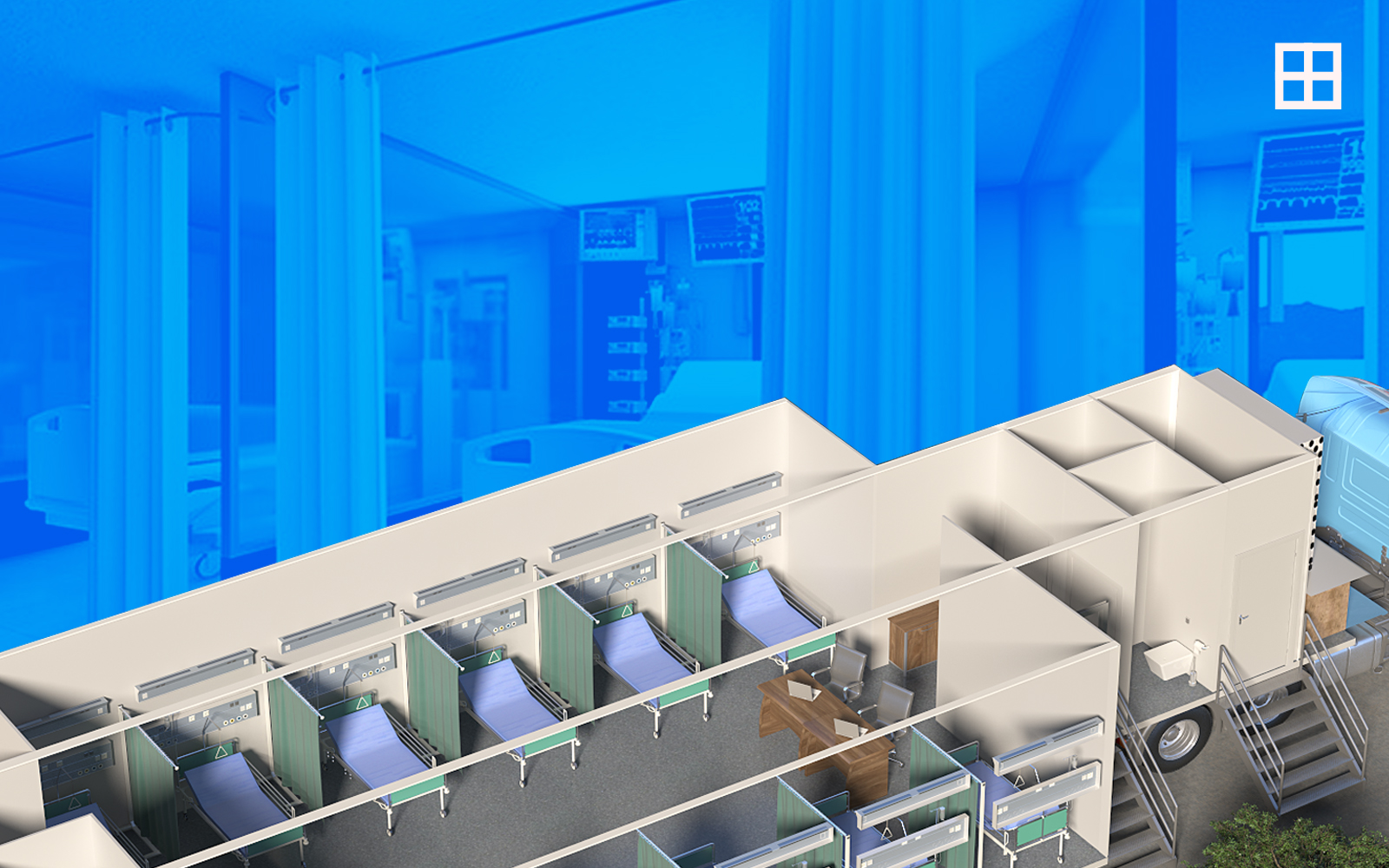In a rapidly evolving world, where adaptability is key, the concept of mobile hospitals and clinics emerges as a beacon of innovation in healthcare infrastructure. These versatile units, aptly dubbed “Hospital in a Can,” have become instrumental not only in disaster relief but also in providing specialized medical services on the go. In this comprehensive blog, we delve into the myriad applications of mobile healthcare, exploring its potential before and after natural disasters, its role in specialized fields like dentistry and ophthalmology, and the customizable nature that makes it a valuable asset for both the government and private sector investors.
The Evolution of Critical Care: Enter Mobile ICUs
Traditionally confined to hospital settings, critical care has undergone a transformative evolution with the advent of mobile ICU units. These self-contained, high-tech facilities on wheels are equipped with the latest medical technologies, allowing healthcare professionals to deliver intensive care beyond the walls of a hospital.
Capabilities of Mobile ICU Units: A Technological Marvel
Mobile ICUs boast a plethora of advanced capabilities that make them indispensable in critical care scenarios. These units are equipped with state-of-the-art life support systems, monitoring devices, and diagnostic tools. Ventilators, cardiac monitors, and advanced medication delivery systems are seamlessly integrated, ensuring comprehensive care on the move.
Rapid Deployment: A Race Against Time
Immediate critical care is often a race against time, especially in emergency situations. Mobile ICU units are designed for rapid deployment, capable of reaching remote locations or disaster-stricken areas swiftly. Whether responding to a mass casualty incident or providing critical care during a natural disaster, the agility of mobile ICUs can mean the difference between life and death.
Natural Disasters: The Crucial Role of Mobile ICUs
In the aftermath of natural disasters such as earthquakes, hurricanes, or floods, access to traditional healthcare facilities may be compromised. Mobile ICUs become a lifeline in such scenarios, offering on-the-spot critical care to those injured or affected. These units can set up temporary intensive care facilities, providing immediate relief to individuals who may be in critical condition.


Mass Casualty Incidents: Coordinated Critical Care
During mass casualty incidents, the demand for critical care often exceeds the capacity of conventional hospitals. Mobile ICUs play a pivotal role in such situations, providing a coordinated response to multiple critical cases simultaneously. Their ability to function independently or in collaboration with existing healthcare infrastructure ensures a seamless and efficient response to emergencies.
Transportation of Critical Patients: Beyond Geographical Barriers
In scenarios where patients need to be transported over long distances for specialized care, mobile ICUs offer a solution. These units are equipped to transport critically ill patients while providing continuous monitoring and life support. This capability is especially crucial in regions where access to advanced healthcare facilities may be limited.
Remote Locations: Extending Critical Care Reach
In remote or underserved locations where establishing a traditional hospital may be impractical, mobile ICUs bridge the gap. These units bring critical care services to communities that would otherwise be isolated from immediate life-saving interventions. The impact on improving healthcare outcomes in remote areas is substantial.
Conclusion: The Future of Critical Care on Wheels
As we navigate the evolving landscape of healthcare, Mobile ICU units emerge as a symbol of progress and compassion. The ability to deliver critical care anywhere, addressing the urgent needs of patients in diverse scenarios, underscores the invaluable contribution of these mobile marvels to the well-being of communities worldwide. The future of critical care is undoubtedly on wheels, bringing hope and healing to those who need it most.




